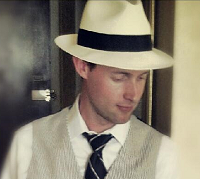 By Edgar Wilson, Independent Analytical Consultant
By Edgar Wilson, Independent Analytical Consultant
Twitter: @EdgarTwilson
Achieving interoperability is not just a technical hurdle: it is a challenge to the thinking of medical professionals.
Compared to the programing and design obstacles that Meaningful Use software has been institutionalizing—to say nothing of the financial challenges presented by the ICD-10 conversion—overcoming the silo thinking in medicine presents a much more fundamental, even existential, quandary: how to get an already overburdened professional class to provide more collaborative care?
This isn’t just a matter of technology, but of adapting legacy thinking to improve human systems without reinventing them. Silo thinking presents in business when different departments adopt an insular view and approach to projects. Each stage or aspect of their work is approached in isolation from the other, ignoring the interactive nature of business, where one set of decisions influences the other.
In medicine, specialization and skill-oriented role distinctions encourage a similarly silo-ed approach—one which interoperable EHR platforms are supposed to help reassemble.
Technology is not the only—or even the best—way to bring disparate teams of professionals and facilities together in coordinating patient care. Even if the tools are emerging, the training hasn’t been historically prioritized. Instructors and policymakers in Ohio recognized as much, embracing a multi-million dollar, statewide plan to foster a greater sense of inter-professional collaboration by merging it with the existing nursing curriculum.
The MEDTAPP Healthcare Access Initiative is broadly aimed at supporting the recruitment and retention of care providers to work with Ohio’s Medicaid population, but some of the specific elements of achieving this have hit on basic, yet underappreciated, elements of modern medicine. They also happen to be some of the same issues that EHRs have long promised—and so far, under-delivered—solutions to:
- Patients are getting older, managing more chronic conditions, and therefore deal with more specialists. This creates a climate ripe for complications.
- Management of chronic conditions, especially among geriatric populations, blurs right into mental and psychological well-being, and needs more attention relative to physical medicine and treatment
- As the primary source of demand for medical services, prioritizing delivery among the elderly (Medicaid) patients is the most viable way to establish what works, and therefore stands to reduce costs, waste, and generally improve American medicine as a whole
As Suzanne Perraud, Associate Dean for Academic Affairs at University of Cincinnati’s School of Nursing (one of the participating schools) explained, “the nature of health care is interprofessional—and chronic and mental illness are often seen together, and across the lifespan—it’s extremely important that we work in a multidisciplinary way to achieve this goal.”
What these educators are doing, in effect, is training students to think and practice medicine not in a bubble, but in an organic continuum of care, wherein both patients and care providers are seen as connected, rather than separate elements competing for consideration. Mental and emotional care can aid or impede physical care, just as one doctor’s prescriptions can counteract the benefits of another.
While EHR platforms are supposed to integrate the information about patients and the care they receive in one digital entity, this approach to education trains providers to think and approach medicine more collectively.
(Ironically, because Ohio’s MEDTAPP Initiative targets the state’s Medicaid patients, it effectively allocates federal funds into the program, even as pressure on Meaningful Use and the associated technological efforts stall nationally.)
There is much to recommend such a practical approach to reimagining care with a focus on systems and thinking, rather than technology and tools.
Consider how hospitals have redesigned their approach to treating heart-attack victims, successfully reducing wait times for treatments with process-oriented changes. Certainly, technology played a role, but the core of the reforms was procedural, logical, and professional.
Marrying modern technology with education has come naturally for the next wave of medical students; research from the University of Ohio shows nursing students embracing everything from iPads to headsets with enthusiasm and ease. This shouldn’t be surprising–after all, today’s students tend to spring from the generation of Millennials who largely grew up carrying tablets and forging digital relationships as a matter of daily routine.
Their challenge will not be the current one, of making peace with the machines now proliferating among American hospitals, but making the conscious effort to work together in delivering care that is both accountable and effective.
About the Author: Edgar Wilson, an Oregon native, is an independent analytical consultant. He can be reached via email here or on Twitter @EdgarTwilson.
